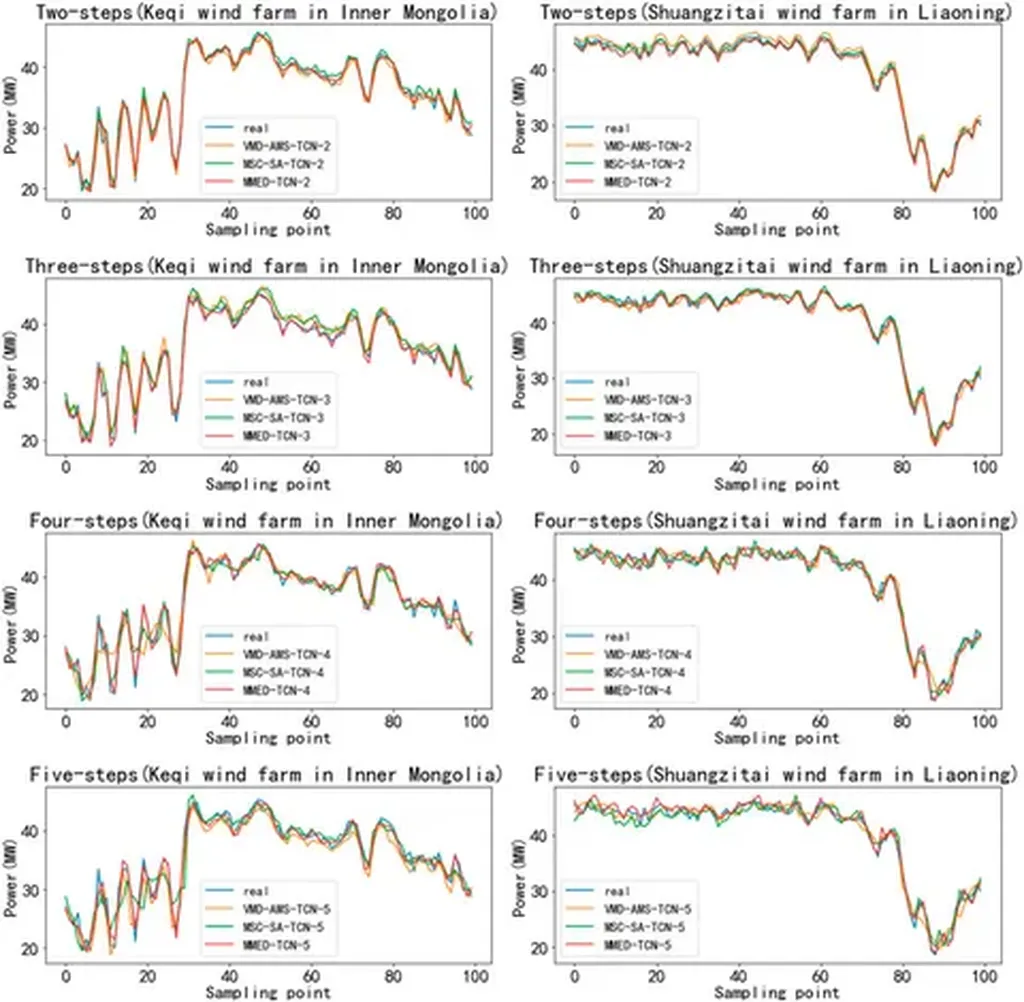In the quest for cleaner energy, wind power stands as a beacon of hope, yet its variability remains a formidable challenge. A recent study published in the journal *Energies* offers a promising solution to this age-old problem, potentially reshaping how we harness and integrate wind energy into our power grids. The research, led by Xuehui Wang from the College of Data Science and Application at Inner Mongolia University of Technology, introduces an innovative ultra-short-term wind power prediction method that combines multiple technical indicators with the XGBoost algorithm.
Wind power’s inherent unpredictability has long been a thorn in the side of energy providers. Accurate predictions are crucial for grid stability and efficient energy distribution. Wang’s team drew inspiration from financial time series analysis, applying tools like K-line representations, moving average convergence divergence (MACD), Bollinger bands (BOLL), and average true range (ATR) to enhance the sensitivity of their model to short-term variations. “By integrating these financial technical indicators, we can capture the nuances of wind power fluctuations more effectively,” Wang explained.
The proposed method was put to the test on real-world datasets from Inner Mongolia, China, and Germany, sourced from the European network of transmission system operators for electricity (ENTSO-E). The results were impressive. On the Inner Mongolia dataset, the model reduced the mean squared error (MSE) by approximately 11.4% compared to the long short-term memory (LSTM) model, a significant improvement in prediction accuracy.
So, what does this mean for the energy sector? More accurate predictions can lead to better grid management, reduced reliance on backup power sources, and ultimately, lower costs for consumers. “This method has the potential to make wind power more reliable and integrate more seamlessly into our energy systems,” Wang noted.
The study’s success opens up new avenues for research and application. As Wang and his team continue to refine their model, the energy sector can look forward to more stable and efficient wind power integration. The fusion of financial technical indicators with machine learning algorithms could also inspire similar approaches in other renewable energy sectors, paving the way for a more sustainable energy future.
In the ever-evolving landscape of renewable energy, this research marks a significant step forward. As we strive for a low-carbon future, innovations like these will be instrumental in making wind power a more reliable and integral part of our energy mix. With continued advancements, the dream of a stable, sustainable energy grid powered by renewable sources is becoming increasingly attainable.

